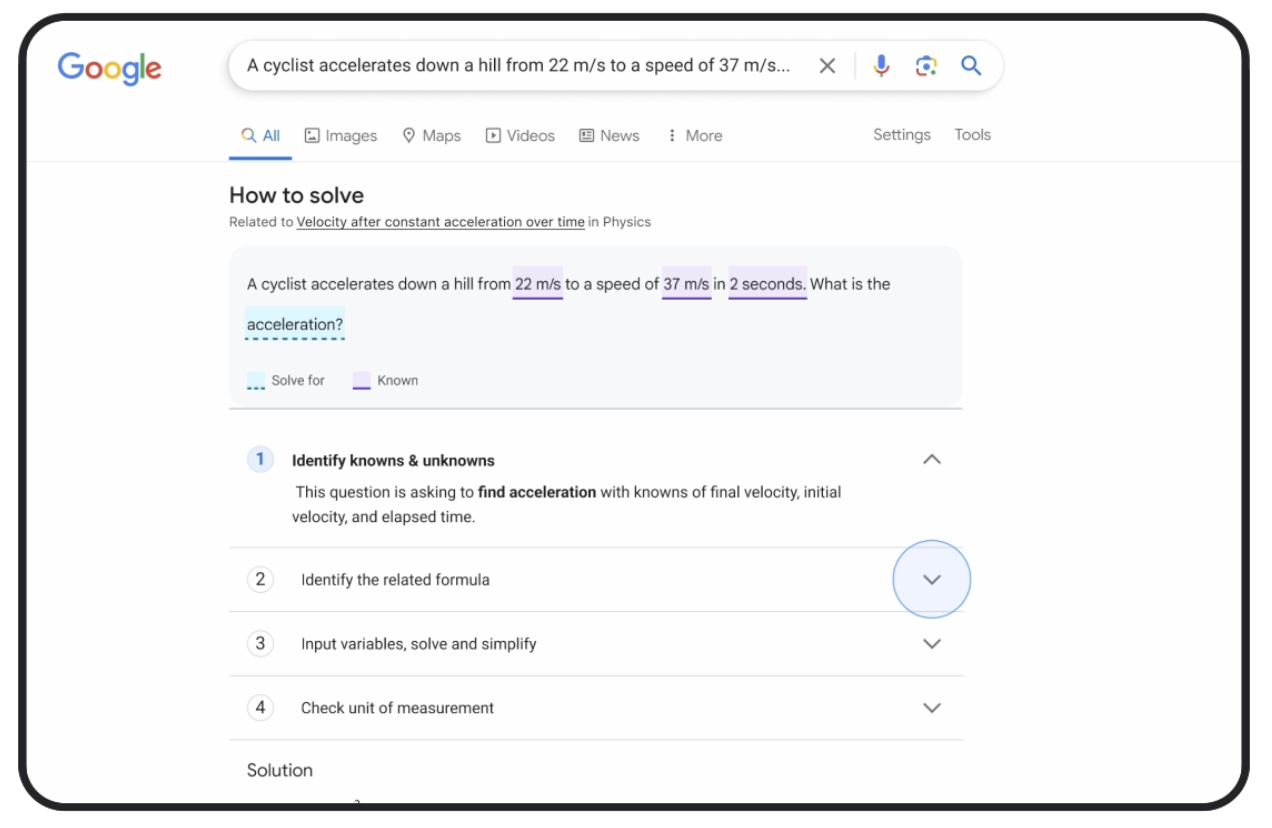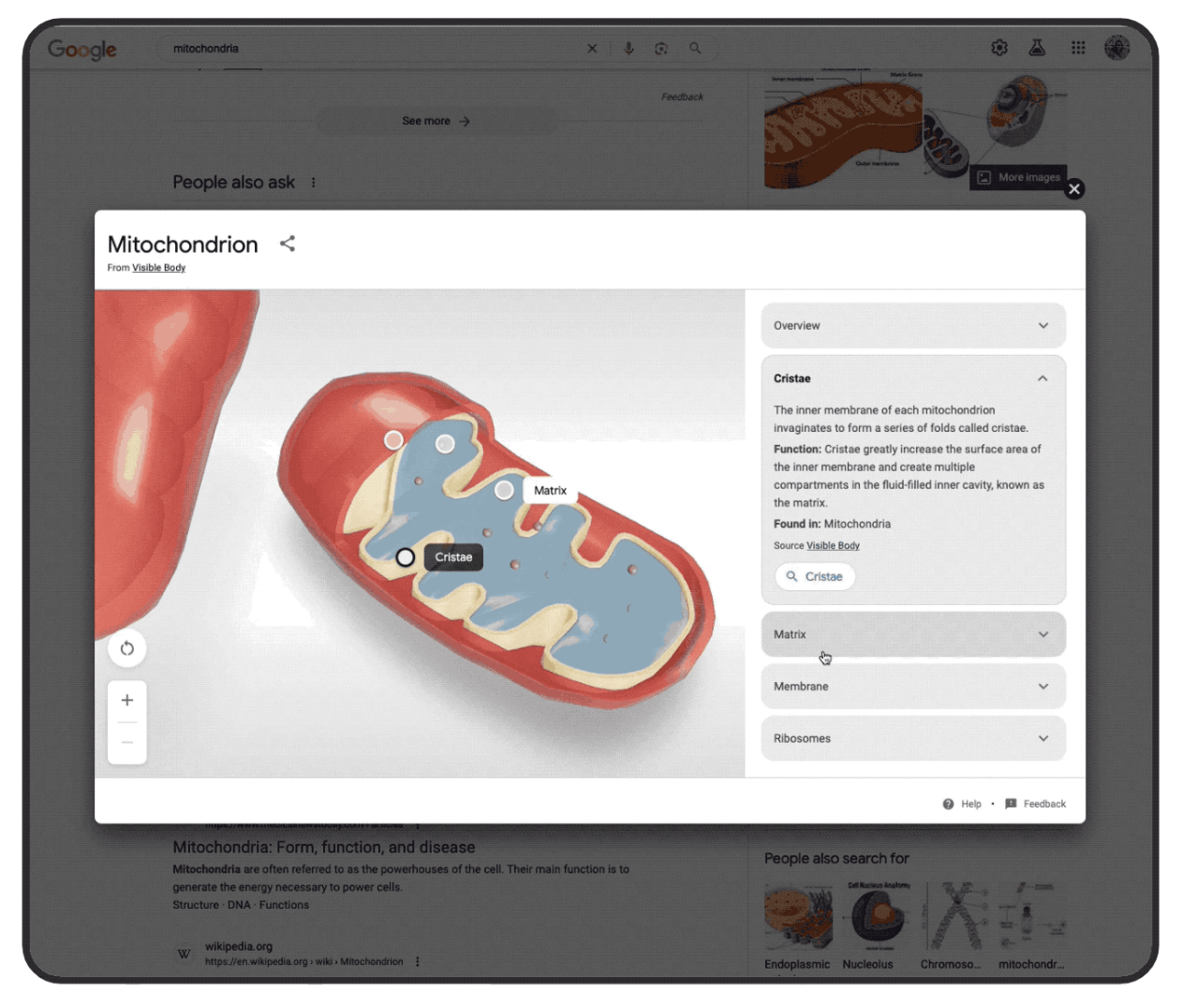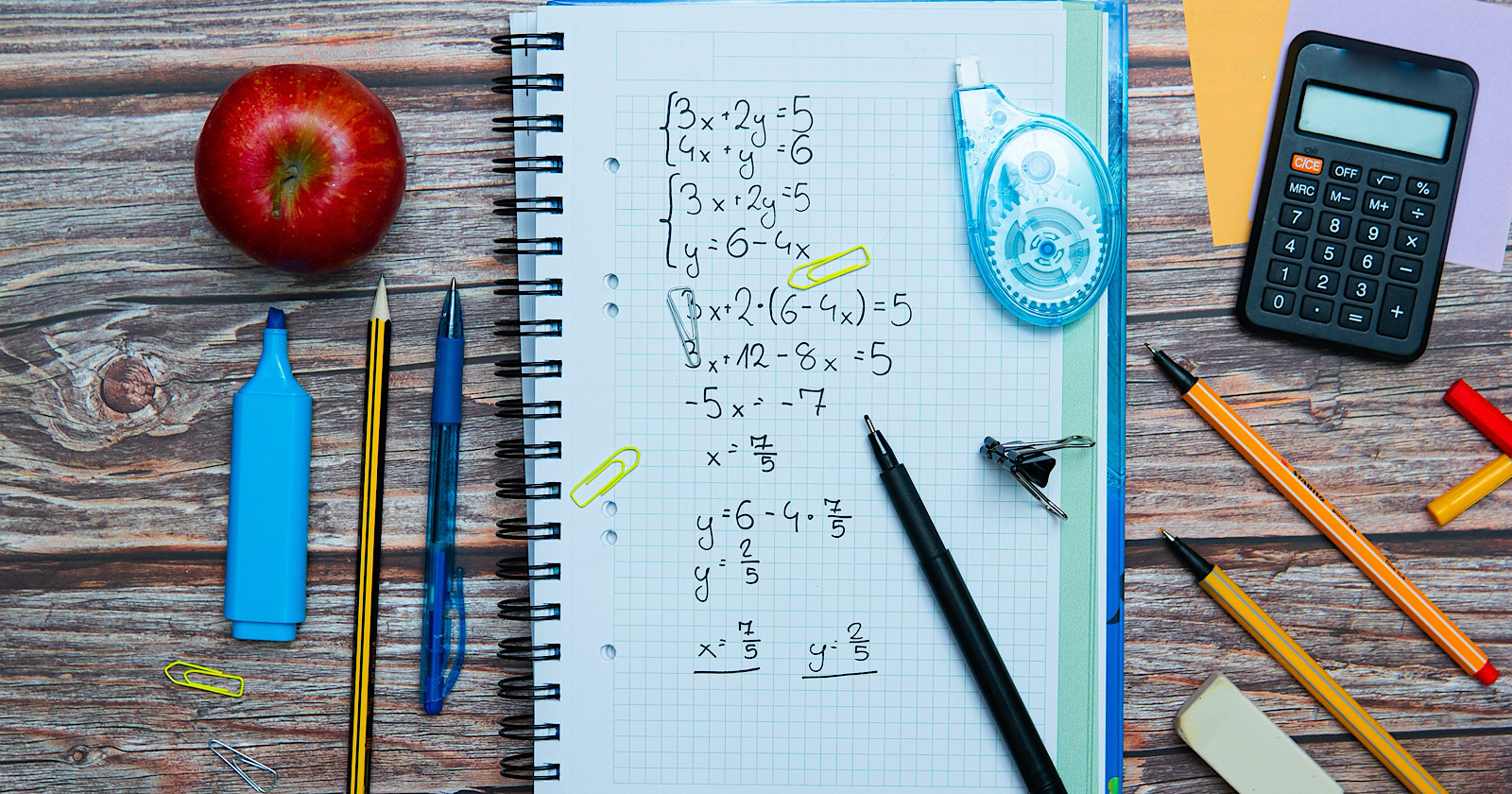Google is rolling out new capabilities to Search and Lens that will assist in solving complex math and science problems.
These new tools provide step-by-step explanations, solutions, and interactive 3D models to aid visual learning for STEM (science, technology, engineering, and math) subjects.
The announcement highlights new AI advancements powering the upgraded math, science, and visual search capabilities.
Enhanced Math Problem Solving
For math questions, you can now take a snapshot of handwritten equations using the Lens app on smartphones.
This recognizes the handwriting and provides step-by-step work to reach the solution.
The new math solver tool breaks down complex calculus and trigonometry problems. It shows each step needed to get to the answer.
It’s designed to help students understand the fundamentals behind solving equations, which they wouldn’t receive by searching for the final numeric solutions online.
Assisting With Science Word Problems
 Screenshot from: blog.google/products/search/more-help-with-math-and-science-problems-in-search/, October 2023.
Screenshot from: blog.google/products/search/more-help-with-math-and-science-problems-in-search/, October 2023.A new physics word problem feature allows you to input a question, and then it draws boxes around known variables and circles the unknowns. It then suggests relevant formulas and how to apply them correctly.
This tool currently handles foundational high school physics topics like forces, energy, and motion. Google plans to expand it to more advanced university-level concepts.
Interactive 3D Concept Diagrams
 Screenshot from: blog.google/products/search/more-help-with-math-and-science-problems-in-search/, October 2023.
Screenshot from: blog.google/products/search/more-help-with-math-and-science-problems-in-search/, October 2023.New interactive 3D concept diagrams cover STEM topics, including cell biology, anatomy, robotics, space physics, geology, and more.
You can zoom, rotate, and click on labeled parts of each model to get definitions and detailed explanations.
The visual models aim to boost curiosity and learning of science concepts.
“Developing a deep visual understanding of STEM-related topics is a key part of mastering the subject,” Google stated.
Providing an Intuitive Learning Experience
Google expressed hope that the math, science, and visual capabilities will enable users to satisfy their curiosity and gain new knowledge.
The features are the latest in the company’s ongoing efforts to improve Search and Lens as helpful learning tools.
Featured Image: Kamil Zajaczkowski/Shutterstock

